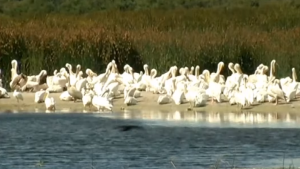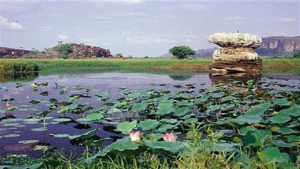By Barbara Creecy
The conservation and restoration of wetlands remains crucial to achieving many of our national and global sustainable development goals. Estuaries, marshes and vleis, rivers and lakes, and the biodiversity that they preserve matter for our health, food supply, tourism, and jobs.
Wetlands provide essential ecosystem services such as water regulation, including flood control and water purification.
Although wetlands cover less than 3% of South Africa’s land area, they offer diverse benefits that enrich human well-being. Wetlands are increasingly regarded in South Africa as socio-ecological systems as opposed to only ecological systems. Many of our wetlands are in urban areas and are often the last remaining open areas for recreational use by the public.
The Department of Forestry, Fisheries and the Environment (DFFE), through the Working for Wetlands programme has invested over R1.4 billion in the rehabilitation of 1 873 wetlands and created 43 662 jobs. The Working for Wetlands Programme, which commenced in the year 2000, is being implemented in all 9 provinces of South Africa by a dedicated team of experts working closely with communities. Bulk of the jobs created through this programme are in the rural areas and these jobs contribute to the socioeconomic upliftment of women and young people in rural communities.
The South African National Biodiversity Institute (SANBI) – an entity of DFFE – is also actively contributing to wetlands conservation through its comprehensive approach to mapping and understanding this critical ecological infrastructure, emphasising that informed action today can make a significant difference for the future of wetlands, human well-being and biodiversity. Strategic Water Source Areas (SWSAs) are crucial to South Africa’s water security, and various SANBI projects provide insight into land use and protection levels in these strategically important national assets.
Through the development of partnerships to monitor, protect, and rehabilitate wetlands, our government – working together with communities – ensures that our wetlands are kept free of litter and invasive alien plant species. By working together with communities, our government also ensures that we follow best practices to ensure that our country’s wetlands are sustainably used for their services.
As the government, we show our appreciation to all South Africans for their contribution to the protection and conservation of our wetlands. Working together we can continue to ensure that our wetlands remain in place to benefit present and future generations.
As the government, we are proud that South Africa now has 30 wetlands of international importance also known as Ramsar Sites in different provinces. In her announcement of the designation of South Africa’s 30th Ramsar Site – De Berg Nature Reserve (Wetland of International Importance), the Secretary General of the Ramsar Convention on Wetlands, Dr Musonda Mumba said “the inclusion of this new “Ramsar Site” in the “Ramsar List” is a clear indication of the Republic of South Africa’s continued commitment in implementing the Convention, to achieve the conservation and sustainable use of the most important wetlands in the country. This brings the total number of Ramsar Sites in your country to 30, and the surface area covered by these Sites is now 574 033 hectares.”
South Africa’s 30th Ramsar Site, De Berg Nature Reserve is located along the headwaters of the Dwars River in the highest part of Mpumalanga, approximately 20 kilometres north of the town of Dullstroom. At an elevation of just over 2300 meters above sea level, the Ramsar Site contains the highest altitude wetlands in Mpumalanga, consisting of numerous valley bottom, seep wetlands, and mountain streams that represent some of the most pristine and habitat-diverse watercourses in the South African grassland biome.
The Ramsar Site, which is a biodiversity hotspot, not only supports numerous pristine headwater wetlands but also supports numerous threatened, critically endangered, and vulnerable species of plants and animals. The site falls within the Lydenburg and Sekhukhune centres of plant endemism and has a total of 878 indigenous plant species, which includes 30 plant species that are threatened and near-threatened and includes a new species of Bulbine, (B decastroi) which can be found in the valleys of the Reserve.
This site also has 18 species of frogs, 71 reptile species, 432 bird species, and 120 mammal species, including Vandam’s girdled lizard (Smaug vandami), various crane species such as blue crane and grey-crowned crane and mountain reedbuck. Many of these species are also rare and vulnerable species and include flocks of up to 30 of the vulnerable Southern Bald Ibis which roosts on the cliffs above Ibis Falls, one of 10 iconic waterfalls which can be found at the site.
The designation of De Berg Nature Reserve as South Africa’s 30th Ramsar Site under the Convention on Wetlands of International Importance coincided with World Wetlands Day (2 February) which was commemorated under the theme “wetlands and human wellbeing”.
Barbara Creecy is the Minister of Forestry, Fisheries and the Environment




